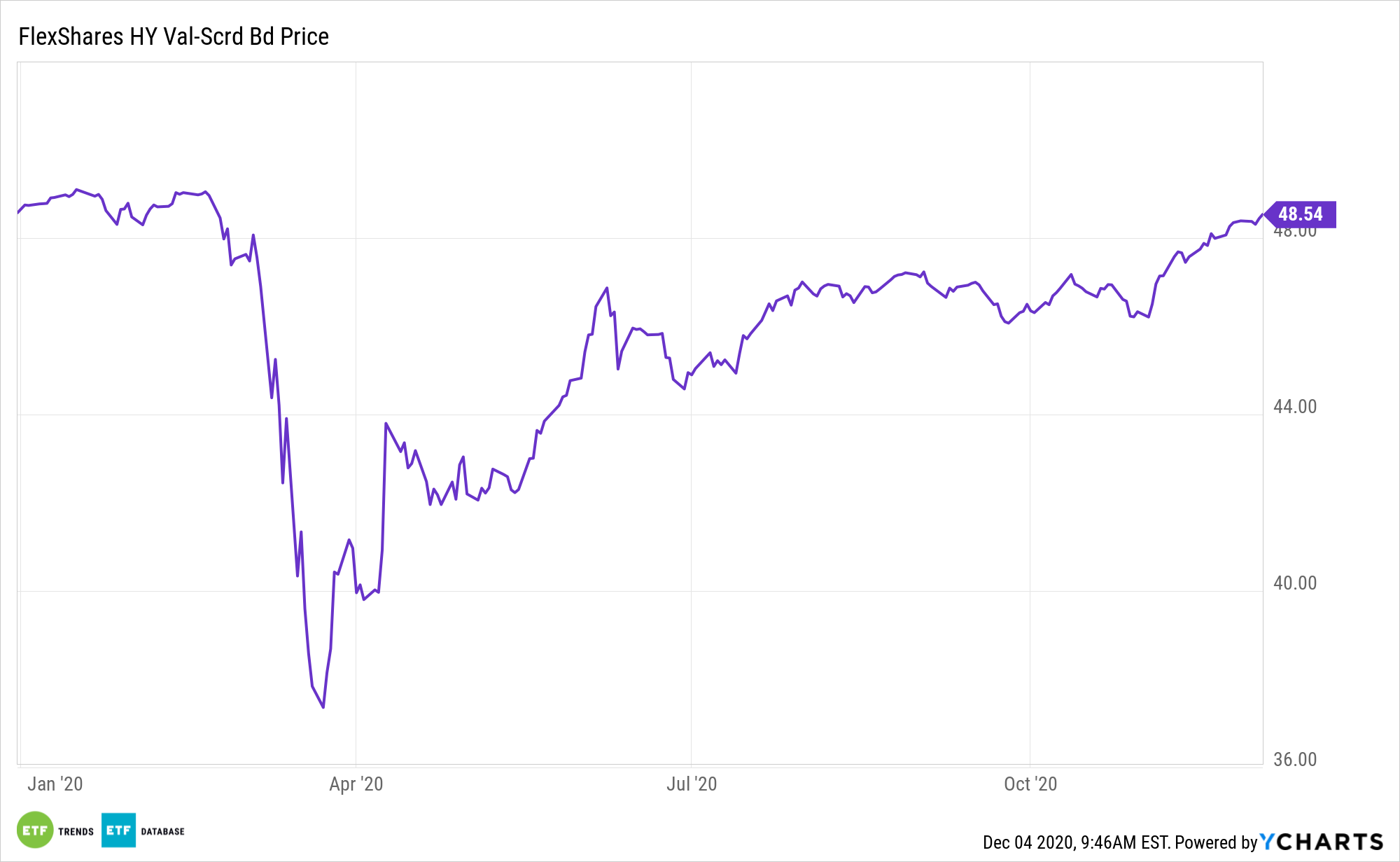As if it’s not hard enough to source yield this year, yields on junk-rated corporate debt are declining. However, that scenario doesn’t dent the case for the FlexShares High Yield Value-Scored Bond Index Fund (NYSEArca: HYGV).
HYGV’s index reflects the performance of a broad universe of U.S.-dollar denominated high yield corporate bonds that seeks a higher total return than the overall high yield corporate bond market, as represented by the Northern Trust High Yield US Corporate Bond IndexSM. The fund generally will invest under normal circumstances at least 80% of its total assets (exclusive of collateral held from securities lending) in the securities of its index.
HYGV is worth considering a time when fixed income investors are embracing riskier fare due to progress on COVID-19 developments.
“U.S. junk bond yields breached record lows for the second time this year as the Federal Reserve’s long-term zero interest rate policy and hopes of a wide distribution of a coronavirus vaccine push investors into riskier assets,” reports Paula Seligson for Bloomberg.
High Hopes for HYGV
With yields on U.S. government debt depressed and likely to remain that way for several years, advisors are looking to other corners of the bond market to source income. Predictability, some will embrace high-yield corporate debt and the relevant exchange traded funds.
HYGV isn’t just about boosting yield. It offers advisors a way to increase fixed income quality in client portfolios. That’s a relevant consideration due to a recent increase in default rates in the high-yield space.

With its unique scoring methodology, HYGV offers investors a potentially better mousetrap for junk bonds, particularly for those looking for long-term, yield-bearing allocations.
HYGV focuses on value by pursuing the higher risk/return potential found by concentrating on a targeted credit beta; utilizing Northern Trust Credit Scoring methodology to eliminate the bottom 10% of issuers; performing liquidity assessment based on issuer’s debt outstanding, age, and remaining time to maturity with the purpose of eliminating the bottom 5% illiquid securities; and intending to match the duration of a market cap-weighted index (ICE BofAML US High Yield Index), while maintaining sector neutrality.
“Another big driver of the rally is the Fed’s zero interest rate policy, which is pushing investors into riskier debt to bolster returns in the never-ending hunt for yield,” according to Bloomberg. “The Fed is set to pull back its support of corporate debt at the end of the year.”
For more on multi-asset strategies, visit our Multi-Asset Channel.
The opinions and forecasts expressed herein are solely those of Tom Lydon, and may not actually come to pass. Information on this site should not be used or construed as an offer to sell, a solicitation of an offer to buy, or a recommendation for any product.

